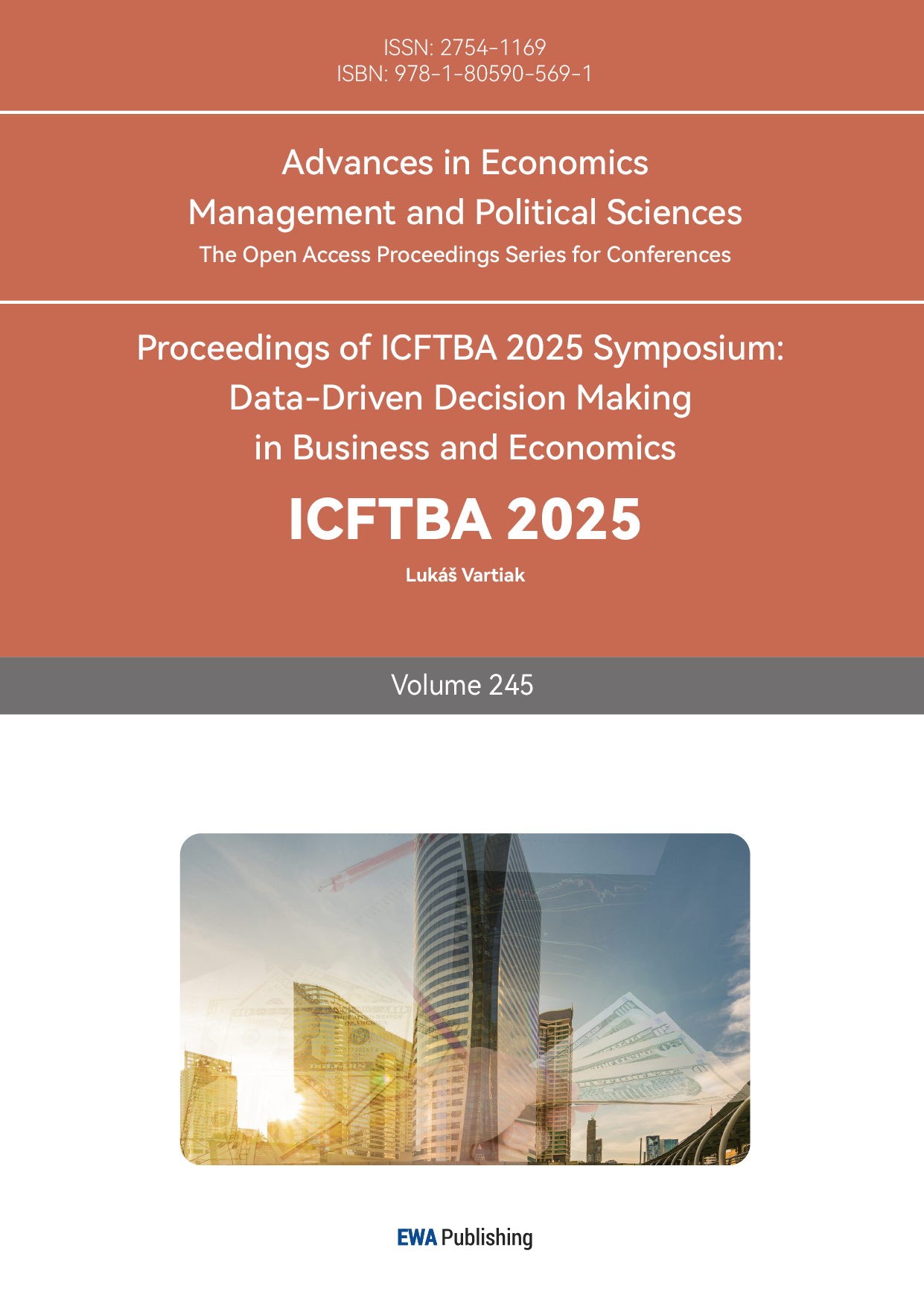References
[1]. iResearch. (2024). China Artificial Intelligence Industry Research Report 2024. [Online]. Available: https: //pdf.dfcfw.com/pdf/H3_AP202503271648275209_1.pdf.com
[2]. Wang, Y. Q., & Dong, W. (2020). How does the rise of robots affect China's labor market? Evidence from listed manufacturing companies. Economic Research Journal, 10, 1-15.
[3]. Guomin Jinglve. (2025, July 17). Guangdong secures another title as China's "No.1 Province". 20250717
[4]. Zhejiang Economic Information Center. (2025, March 21). Building digital industrial clusters and advancing digital transformation: Zhejiang approved for a new round of national-level experimental zones. 20250321
[5]. Hunan Provincial Department of Industry and Information Technology. (2024, July 30). Hunan's AI industry remains stable and shows positive momentum. 20240730
[6]. Shenzhen Electronics Chamber of Commerce. (2024). Research and analysis on China's AI industrial chain mapping. 20240126
[7]. Autor, D. H. (2013). The "task approach" to labor markets: An overview. Journal for Labour Market Research, 46(2), 185–199. https: //doi.org/10.1007/s12651-013-0128-z
[8]. Blanchard, O. J. (2019). The state of macro. Journal of Economic Perspectives, 33(2), 3–28. https: //doi.org/10.1257/jep.33.2.3
[9]. DARONACEMOGLU, PASCUAL RESTREPO. (2022). Tasks, automation, and the rise in U.S. wage inequality. Econometrica, Vol. 90, No. 5 (September, 2022), 1973–2016.
[10]. Acemoglu, D., & Restrepo, P. (2019). Automation and new tasks: How technology displaces and reinstates labor(MIT Shaping Work Project Report). Massachusetts Institute of Technology.
[11]. Autor, D. H., Katz, L. F., & Krueger, A. B. (1998). Computing Inequality: Have Computers Changed the Labor Market? Massachusetts Institute of Technology, Department of Economics. https: //doi.org/10.1162/003355398555874
[12]. Autor, D. H., Dorn, D., & Hanson, G. H. (2018). Import competition and the great U.S. employment sag of the 2000s(NBER Working Paper No. 24196). National Bureau of Economic Research.
[13]. Osborne, M. A. (n.d.). [AI and the future of work: Implications for policy and society](Future of Life Institute Report). Future of Life Institute.
[14]. Daron Acemoglu, Pascual Restrepo. (2022). Tasks and inequality(Boston University Department of Economics Working Paper).
[15]. Ngor Luong, N., & Arnold, Z. (2021). China’s Artificial Intelligence Industry Alliance: Understanding China’s AI Strategy Through Industry Alliances(Data Brief). Center for Security and Emerging Technology. https: //doi.org/10.51593/20200094
[16]. Angela Huyue Zhang. (2024). The promise and perils of Chinese AI regulation(Columbia Law School Working Paper). Columbia Law School.
[17]. National Bureau of Statistics of China. (2024, April 29). National Data [Web page]. https: //www.stats.gov.cn/sj/zxfb/202404/t20240429_1973412.html



